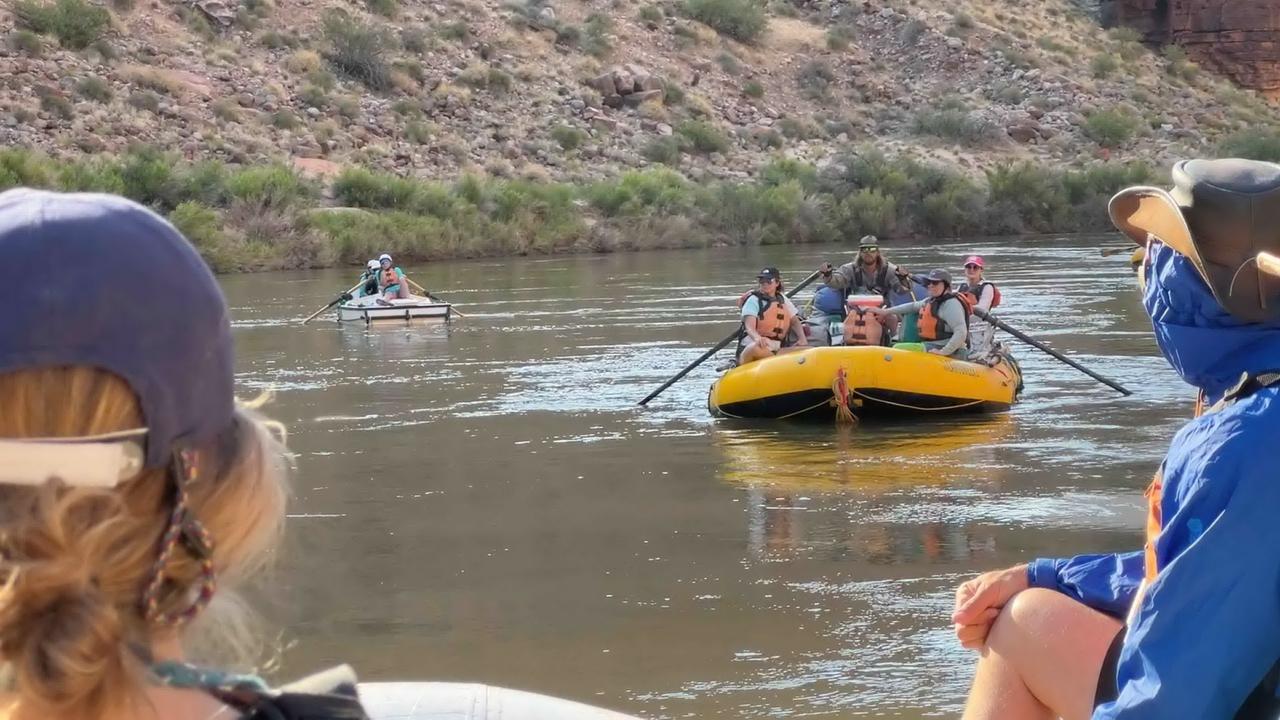Many first-time rafters miss the chance to experience the exhilaration and adventure of whitewater rafting because of its' myths. However, did you know that most myths are only negative perceptions of rafting?. And that most of them are false?
Read on to learn about 13 debunked whitewater rafting myths.
Thirteen debunked whitewater rafting misconceptions
Myth #1: Only athletes will enjoy rafting
Yes, athletes in excellent physical condition have an advantage because they won't be that clumsy in the raft. However, anyone fit enough to get in or off the raft can safely go on river trips.
Myth #2: The food served is horrible
The food served during rafting trips is far from awful. On the contrary, our tour guides carry the required equipment and use locally sourced foods for cooking hot, delicious food throughout the journey.
Myth #3: There are no bathrooms
Anyone who's been on whitewater rafting trips will agree that they were happy with the privacy and accessibility of the bathroom facilities. Bathroom facilities are set up in a remote corner of the camp, pretty much like your bathroom at home. You can alternatively head down to a secluded area out of camp.
Don't worry. This area is off-limits to anyone else but the person using it. We also have self-contained disposal kits for solid waste available to use during the day.
Myth #4: Whitewater rafting is dangerous
Like any sport, whitewater rafting has its associated risks. Our experienced team and guide, however, can handle any emergency.
Myth #5: I will need my electronic devices
It's no doubt that you rely on rechargeable devices to perform essential tasks. However, has it ever occurred to you that your body batteries also need recharging? And the best way for humans to recharge is by unplugging. While other vacations allow some access to electronic devices, multi-day trips rafting rivers is one of the few vacations letting you genuinely disconnect.
Myth #6: Not all rafting guides are of the same mold
Yes, while most guides are loud, bearded hulks, we have professional dancers, teachers, and even archeologists as guides!
While some are quiet and others hilarious, they share a common trait; their love for the outdoors. Our guides strive to make your experience better and more memorable by telling jokes, entertaining you on various topics, and cooking delicious food. They also undergo special training in wilderness first aid, river navigation, whitewater rescue, and more.
Myth #7: Only adrenaline junkies should go rafting
Rafting is an exhilarating and extreme sport. However, not all rafting trips are intense. We have different trips, each with different levels of intensity and challenges. So we also have float tours to enjoy the scenery if you aren't too keen about hurling down the river at full force.
Myth #8: You can't go rafting if you don't know swimming
A good swimmer does have an edge while on a whitewater rafting trip. However, it's not essential to know to swim. What's more important is listening to our guides' introductory speech. Your outfitter will direct you about the proper technique to adopt if you fall out into the water. Besides, we provide everyone with a lifejacket for safety purposes.
Myth #9: I will be stuck on the raft through the day
You will spend most of the time stuck on the boat during a one-day rafting trip. However, did you know that you spend more time on foot than in the raft during multi-day tours?
These multi-day tours are quite different, where you may go on hikes throughout the day.
Myth #10: Only campers will enjoy rafting
No, it doesn't matter if you know camping or not. Most of the guests on our rafting trips have never been camping before!
They, however, happen to agree that the experience made them love camping!
Who wouldn't with the stuff we offer on the trips?
There's the thrill, wildlife, and delicious, freshly cooked food you get to enjoy when on the shore, under the stars at night!
Myth #11: Formal attire is a no-no on trips
There's no strict rule about what you wear on the trip, and nothing stops you from wearing your favorite sun shirts and pants on the whitewater rafting trip. However, we recommend wearing something comfortable to enjoy your trip the most.
Myth #12: If you've seen one whitewater rafting trip, you've seen it all
Most first-time rafters think rafting is the same wherever they go. However, it's far from true as each river trip is unique, with special offers every time, even on the same run. It's because the Canyon has so much to offer. And it's impossible to be able to see everything in just one trip!
It's only after you explore the various rivers of the West that you realize that the canyon landscapes, rocks, surroundings, and vegetation are so different. You will see that each river and canyon has its personality and features and that no two trips are the same.
Myth #13: The Western US river water levels are reducing
The Western US has indeed been in drought in recent years. However, the good news is that the melting ice flowing out of the mountains in spring and summer swells most Western rivers. So it means that the rivers are always full of water.
Conclusion
Now that we have proven that these 13 most common whitewater rafting trip myths are false, it's time you finally plan your coveted fun trip. And this is where we can help you with the planning and arrangements for your adventures.
Contact Advantage Grand Canyon for all your Grand Canyon whitewater rafting trips. Search all top 15 outfitters right here!
While the Futaleuf with five Class V rapids is famous for its giant water and waves, the Terminator is the biggest and most dangerous in the world. The Terminator is also the fastest and most challenging commercially run rapid worldwide.
If someone is injured on a Grand Canyon rafting trip, guides, trained in wilderness first aid, will first stabilize the person and assess the need for evacuation. They use satellite phones or radios to contact emergency services. If evacuation is necessary, a helicopter is typically dispatched to designated landing zones within the canyon. The injured person is then flown to a nearby hospital, usually in Flagstaff or Las Vegas. In some cases, the injured person may need to be transported by boat to a more accessible location before evacuation. The National Park Service coordinates these efforts to ensure safety..
Injuries on Grand Canyon rafting trips are relatively rare, considering the number of participants, approximately 22,000 to 28,000 both commercially and privately. Most injuries are minor, such as sunburns, cuts, bruises, or sprains, which can occur from slipping on rocks, rough water, or while navigating the raft. More serious injuries, like fractures or dislocations, can happen but are uncommon. Outfitters and guides are well-trained in safety protocols, which helps to minimize risks, making injuries infrequent relative to the overall number of trips..
Class 6 is the most challenging level of whitewater rafting, unrunnable by most people, and highly hazardous. Class 5 is quite an advanced and recommended course for experienced kayakers. Classes 3 and 4 are the standard beginner levels for river rafting, suitable for rafters of all skill levels. In Grand Canyon the scale is a bit more specific, as the rating is a 1 - 10 scale. So you can anticipate a Class 3 on any other river, to be a 5 in Grand Canyon.








